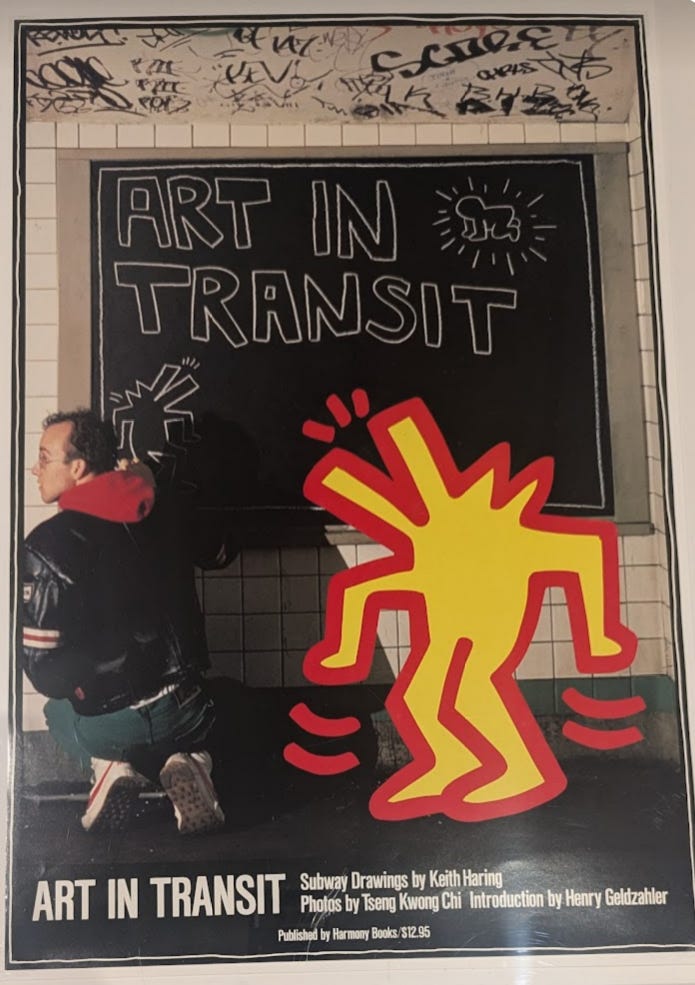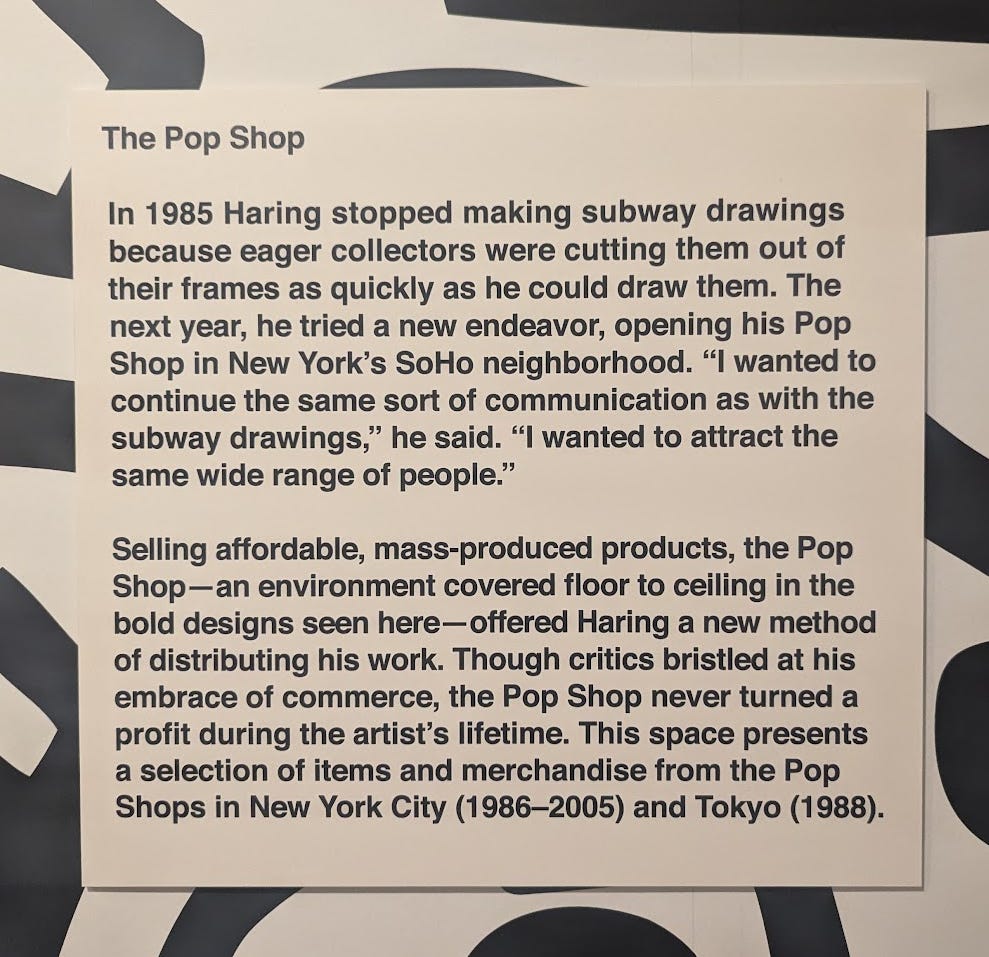Keith Haring & “Everyone” at the Walker
Curators and critics don't understand the role of the public in street art.
In 1989, while walking in Chicago, I stumbled upon the artist Keith Haring in Grant Park, making a 122-panel mural with 500 Chicago high school kids. It was a seminal experience for me—art outside.
Last month, SL and I were in Minneapolis with Christian and we visited “Keith Haring: Art Is for Everybody” at the Walker Art Center. I love this exhibit and I love Keith Haring, one of the most important American artists of the last century. But we have to talk about the goofy way Haring and his curators talk about Arte Agora.
The show, which started at The Broad Museum in Los Angeles and was developed in concert with the Keith Haring Foundation, describes the exhibit’s name, which came from a journal entry written by Haring:
Haring embraced a democratic spirit in his work, aiming to dissolve barriers between art and life. His practice was rooted in the notion that “art is for everybody,” a creative ethos and mission he carried from his early drawings in New York’s subway stations to his renowned public murals.
The problem is that the interpretation of everybody’s rights when they encounter art in public spaces is wildly misguided and tight. As is frequently the case in contemporary curation and criticism, the show—and Haring’s own actions and writings—don’t come close to their stated egalitarian ideals. Far from centering the experience of art in the naturally chaotic context of “everybody,” the curators explicitly damn the public for not always acting exactly the way young Haring wanted them to.
Arte Agora is a real thing—art made, sold or placed in the public way—and Haring practiced it for years
People running museums don’t understand Arte Agora— they don’t know it exists— so they misinterpret the role of the public in the development of street art as a practice over the last 40 years. The dominant thought is that when artists place their work outside, the public is allowed to behave only one way— with glowing reverence and appreciation.
In fact, when art is placed outside in places of density with the competing agencies, regulations, proclivities and needs of millions of humans, all sorts of things are bound to happen.
As
and I write in our books describing Arte Agora, there is a growing practice of artists who are just fine with this reality. We view this in the framework of “actors in the public way:”A symphony of actors commune in the public way. People place art/work, remove those objects, place other new work on top of them, and paint over or pressure wash (buff) them. This communal interaction encourages freshness and regeneration.
To condemn a whole class of people going about their lives outside is weird.
Curators & controllers don’t understand mass behavior
The exhibit catalog, organized by Sarah Loyer with reflections, essays, and conversation by and from many of the people closest to Haring, is visually rich and gives insider views of Haring’s life. But the book, like the exhibit, falls short of the mark in interpreting Keith’s work in the context of modern cities.
In her founding essay, commenting on Haring journal entries, Loyer writes, “if the public is also made up of individuals with differing goals, ideas, and needs, the artist’s duty to make art for everybody requires a range of creative and innovative tactics.”
Chief among these duties is to simply accept individuality— that some people of the millions may want to remove, modify, obscure, or otherwise alter work placed in the public way.
Haring’s primary method early in his career was to draw on black panels provided by the MTA. Loyer writes that his pieces “were meant to be ephemeral, experienced by commuters until they were pasted over with the next paid advertisement.”
But why are the actions of the MTA the only ones allowable? Why can't people take the pieces? Why can’t other artists “collaborate” with the existing piece? Why can't ephemerality be caused by an actor other than the advertiser or the MTA performing an intervention? Why doesn’t “everybody” explicitly include all actors in the public way?
It is wrong-headed and controlling— outright conservative— and it’s also the dominant view.
When “eager” is an epithet and the only clever person allowed is the artist
Here’s the wall card describing the origins of The Pop Shop”:
The message is clear: Keith can be eager in getting his work out there, and be hailed. Any other actor behaving in any way other than the genius artists wants them to is unacceptable.
But I read this history differently: Haring placed his work and saw the actions of the public change through time—more people eagerly removed the work. This spurred him to change his actions, creating a new kind of artist store. Removal can be seen as a catalyst.
Tom Finklepearl, former New York City Department of Cultural Affairs commissioner, wrote in the exhibit catalog about Kwang Chi’s photographs of Keith Haring's work in the subway. He saw photography as guerrilla warfare—clever and furtive.
It reminds me of the movie “The Social Network,” where Mark Zuckerberg took photos from Harvard’s online student directories. Like Zuckerberg, Haring used material without authorization that didn’t belong to him to create something that he considered his. I don’t fault either of them at all—I have no useful opinion about their actions.
We simply point out, repeatedly, in our books about Arte Agora, that there is more than one actor in these situations, and caution against siding with the clever bright ones over the rest of us (everybody).




